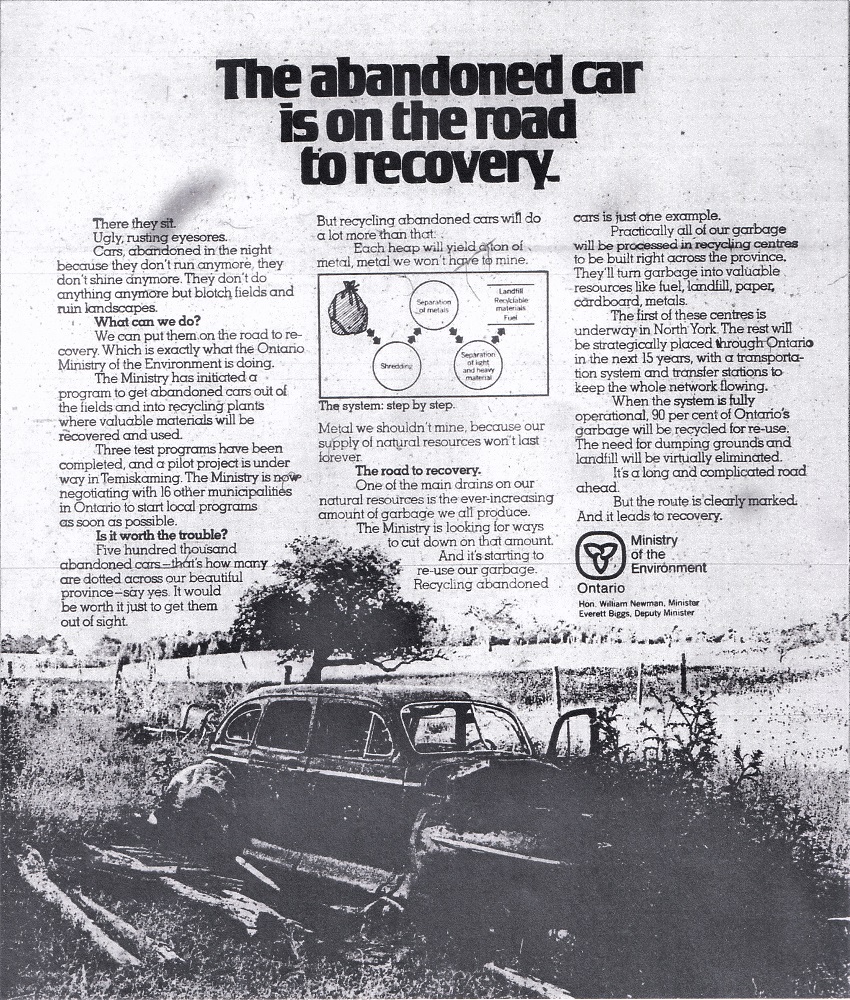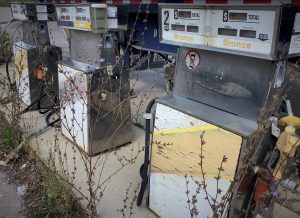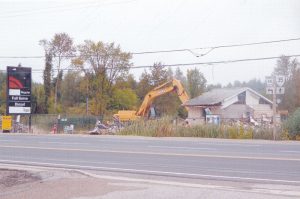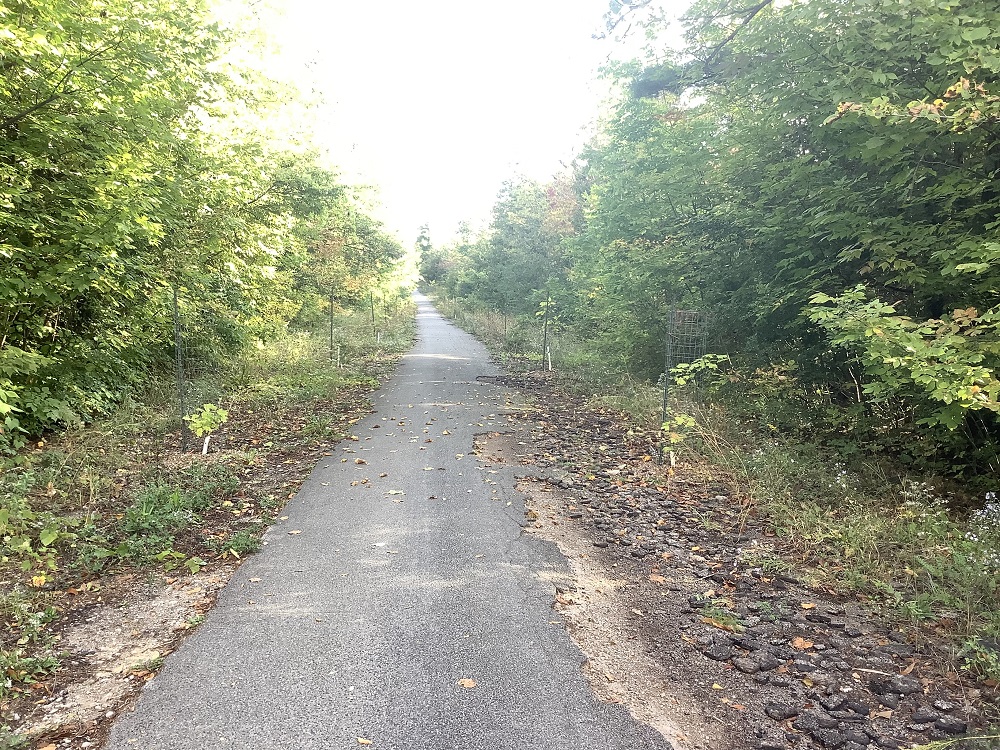Environmental Impacts

Information Sheet, “This Abandoned Car Is On The Road To Recovery,” Ontario Ministry of the Environment, 1975
Human beings have been leaving their mark on the natural environment ever since they began venturing into northwestern Kawartha Lakes for recreational purposes.
The steamboats and steam trains that facilitated tourist transportation in the pre-automotive age were notorious polluters. Their boilers were fuelled by coal or wood and left their surroundings sooty and stained with oil. The diesel locomotive and gasoline motor launches that succeeded them also contributed to a significant carbon footprint created by the tourism industry.
This carbon footprint increased dramatically as more and more motorists took to an expanding highway system in increasingly large cars which consumed tremendous quantities of gasoline. In 1960, the Canadian Automobile Chamber of Commerce reported a total of 10,480 registered vehicles in the region now called Kawartha Lakes. 8,261 of these were private automobiles – a figure which invariably increased as tourists flocked to their destinations during the summer months.
The environmental impact of Ontario’s love affair with the automobile was felt in other ways, too. Building vast swaths of highway and related infrastructure through the wilderness inevitably disrupted natural habitats. Rocky landscapes many millions of years old were blasted away by highway construction crews.
Smaller, though by no means insignificant a problem, was litter. Those frequenting roadside “tourist camps” in the 1920s were encouraged to bury or burn their refuse. By the 1950s, the Ontario Department of Highways had begun placing garbage cans in roadside picnicking spots such as that at Moore’s Falls on Highway 35 North. Unfortunately, these amenities were frequently ignored.
Contemplating the litter of waste paper, scraps of this and that, etc., at Moore’s Falls the other day, one thought ‘What a beautiful place this must have been before man came along!’
– Lindsay Daily Post, August 28, 1952
Changing economics forced many independently-run gas stations to close between the 1970s and 1990s. Left behind were abandoned pumps and underground holding tanks, which could pose problems if not properly cleaned up. As of 2010, Ontario’s Technical Standards and Safety Authority reported some 300 abandoned fuel storage sites across the province, primarily at former gas stations.
Despite decades of environmental degradation wrought by highway-based tourism, efforts have been made by the community to reverse the trend. Balsam Lake Provincial Park has recently converted a nearly two-kilometre stretch of the old Highway 46 through the park into the “Lakeshore Legacy Trail.” Trees have been planted, and park visitors can now cycle or stroll along a route once dominated by gas-guzzling cars.




